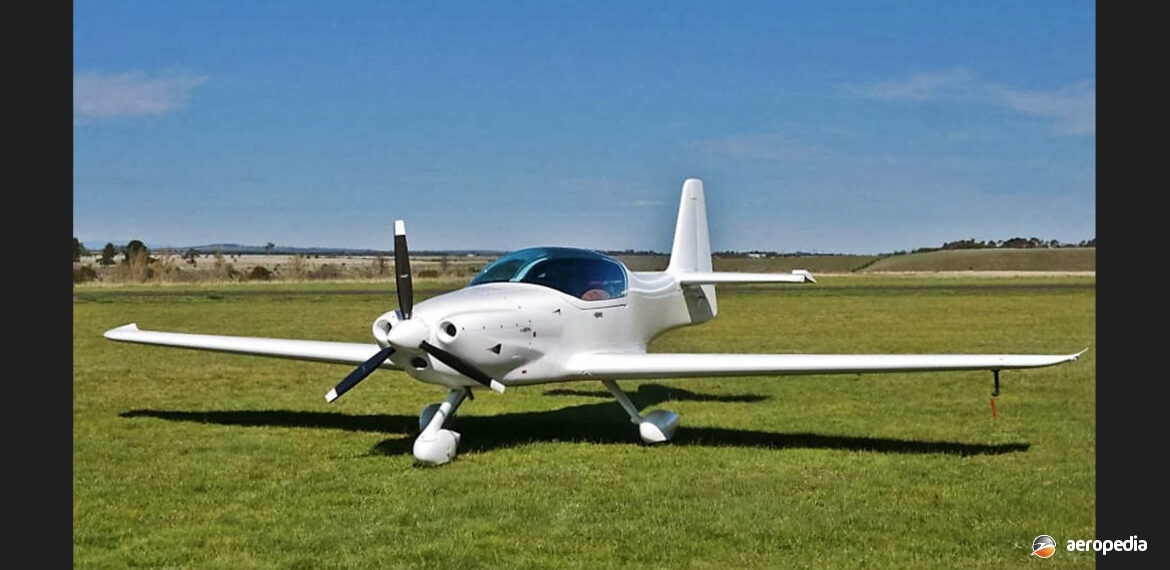Photograph:
The first Corvus Fusion imported to Australia in 2013 (Corvus Australia)
Country of origin:
Hungary
Description:
Two-seat light sport aircraft
Power Plant:
One 79 kw (107 hp) UP Power 260iSA four-cylinder horizontally-opposed air-cooled engine
Specifications:
- Wingspan with winglets: 8.33 m (27 ft 4 in)
- Length: 6.7 m (22 ft)
- Height: 2.28 m (7 ft 6 in)
- Wing area: 10.834 m² (116.62 sq ft)
- Max manoeuvring speed: 194 km/h (121 mph)
- Max speed in windy weather: 261 km/h (162 mph)
- Max horizontal speed: 290 km/h (180 mph)
- Never exceed speed: 313 km/h (194 mph)
- Max design speed: 348 km/h (216 mph)
- Stalling speed with flaps: 65 km/h (40 mph)
- Take-off roll: 120 m (394 ft)
- Landing roll: 180 m (591 ft)
- Max range standard tanks: 1,000 km (621 miles)
- Max range optional tanks: 2,000 km (1,243 miles)
- Fuel capacity standard: 65 litres (14.3 Imp gals)
- Fuel capacity with optional wingtip tanks: 130 litres (28.6 Imp gals)
- Empty weight with rescue parachute: 294 kg (648 lb)
- Loaded weight as ultralight: 472.5 kg (1,042 lb)
- Loaded weight as LSA: 600 kg (1,323 lb)
History:
This light sport aircraft was initially produced by Corvus Aircraft Ltd, this company later becoming known as Corvus Hungary, the Company over a period of eight years developing a fully composite light aircraft for private and training use, production of its aircraft by 2012 being said to be at a rate of 20 to 25 aircraft per year. At that time the Company announced it would move to a new production facility where it would produce 70 to 120 units per annum.
The Fusion was conceived by Andras Voloscsuk, an engineer. It commenced life as a two-seat variant of the Corvus 540 which took part in the Red Bull races flown by Peter Besenyei.
First aircraft produced in the series was the Corvus Phantom, which was followed by the Racer 540, a fully aerobatic high-performance aircraft. The Fusion prototype was completed in January 2012, making its first flight on 30 May 2012. Construction of the type by 2013 was taking place in China, a deal being completed with Chinese Aircraft Industry & Development in co-operation with Xian Aviation Investment Ltd to build the composite aircraft, an assembly plant being set up in China.
Production commenced in March / April 2012, the first batch of three aircraft being fitted with the UL Power 260i SA engine. A second batch of aircraft completed were all fitted with Rotax engines. The UL Power unit was a FADEC controlled unit with multi-point electronic fuel injection, dual electronic ignition and air-cooled direct drive. It was a four-cylinder unit horizontally-opposed. The Fusion also became available with the Lycoming IO-233 and Rotax 912ULS four-cylinder units. The aircraft was certified to LTF-UL 2003, ASTM, LSA and Advance Ultralight.
A company known as Corvus Aero Australia was set up in 2012 to market the aircraft in Australia and New Zealand, the first Australasian aircraft being for Mr Les Elliott of Corvus Australia, who also was the sales representative for UL Power engines. The first aircraft imported as a demonstrator was fitted with a UL Power 260iS engine driving a Woodcomp SR200/J ground-adjustable propeller. This aircraft was noted for sale in November 2015, the aircraft having been imported in 2013, being factory built but at the time it was offered for sale never having been flown nor registered in Australia.
The Fusion shared the wing and tailplane from the racing variant but had side-by-side seating. However, the production company had financial problems and the design was taken over by investors. The aircraft was re-designed, the weight being reduced to permit it to meet LSA market regulations and it was re-marketed as the Magnus Fusion 212, the first example of which arrived in Australia in 2018.
On 3 September 2019 the Fusion became VH-IRS (c/n CH-11-002) to its owner at Hepburn Springs, VIC. In October 2019 it was removed from the general aviation register and placed on the Recreation Aircraft Register.

